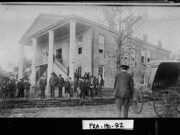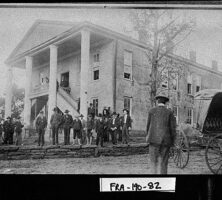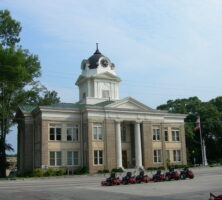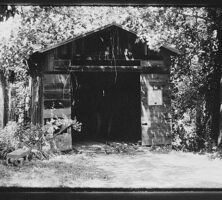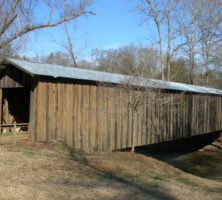Franklin County, in northeast Georgia, was the first county established in the state after the American Revolution (1775-83).
William Bartram traveled through part of present-day Franklin County in 1773. At that time members of the Lower Cherokee Indian tribe lived there. The 1783 Treaty of Augusta established the land claim from the native residents. The county was created in 1784 and named in honor of Benjamin Franklin. In 1787 parts of the original lands were ceded to South Carolina.
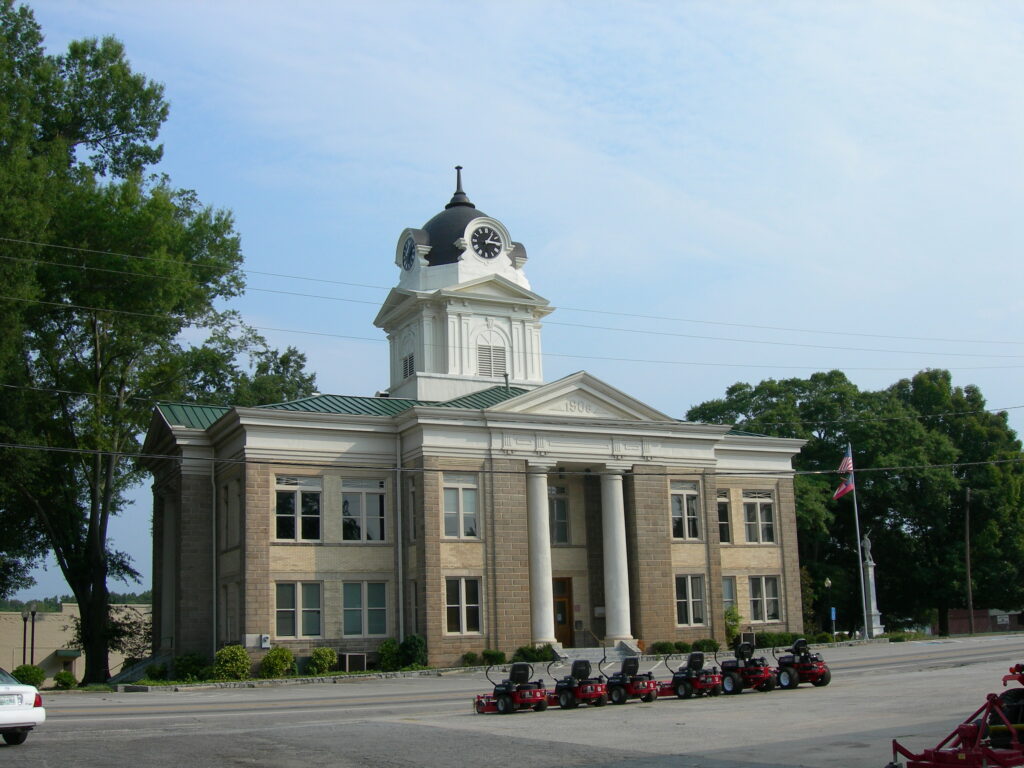
The exact location of the first courthouse, established in 1793, is unknown. The county seat, Carnesville, was incorporated in 1807, and in 1826 a second, more substantial courthouse was built there. The town is named for Thomas Peter Carnes, a lawyer and congressman of the Revolutionary War era. The current courthouse dates to 1906. Other towns include Canon, established in 1875 as West Bowerville (changed to Canon in 1902); Lavonia, established about 1878; Royston, incorporated in 1879; and Franklin Springs, a pre–Civil War (1861-65) health resort known for its mineral springs. Lavonia is the smallest city in the United States with an original Carnegie Library building. The Franklin Springs property is now owned by the Pentecostal Holiness Church and houses Emmanuel College.
The terrain of the county originally consisted mainly of oak-hickory forests. The early settlers cleared large tracts for agriculture, and for 200 years much of the land was devoted to cotton, corn, sorghum, and more recently, livestock. Some of it is now reverting to old-field succession, which, if uninterrupted, will culminate in broadleaf deciduous forest. Livestock production constitutes an overwhelming majority of the agricultural output of the county; the Franklin County Livestock Market in Carnesville is the largest in the state. The Cromer’s Mill covered bridge was built in 1906 and still stands, though it is no longer used for motor traffic. Lake Hartwell, at the northern end of the county, and two state parks, Victoria Bryant and Tugaloo, provide recreational opportunities.

Annual county events include the Junior-Senior Fishing Rodeo at Victoria Bryant State Park in May, the Lavonia Fall Festival in September, and various festivals at Tugaloo State Park throughout the year. Baseball great Ty Cobb was a native of Royston and donated $100,000 to build a hospital for the town; the Ty Cobb Museum is located in the Joe Adams Building there. Other noted residents include former Georgia governor Ernest Vandiver and D. W. Brooks, the founder and chairman of Gold Kist. Interstate 85 provides transportation links to the county. According to the 2020 U.S. census, the population is 23,424, an increase from the 2010 population of 22,084.


